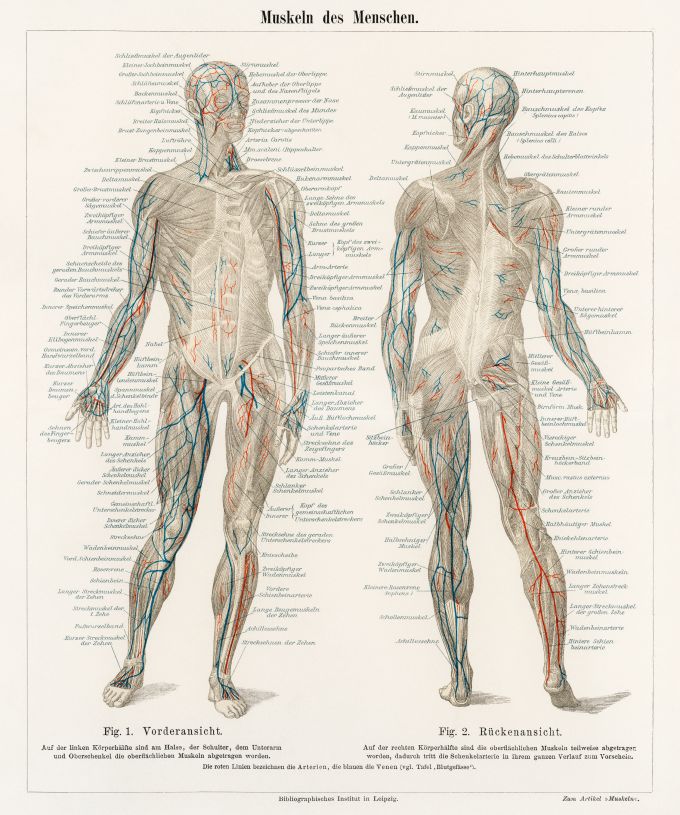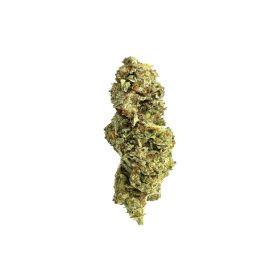What is the endocannabinoid system? According to science, the endocannabinoid system is a densely packed network of chemical signals. It’s a bunch of cellular receptors that run through our brains and bodies. These cannabinoid receptors regulate the levels and activity of most other neurotransmitters.
The endocannabinoid system is responsible for — well, for everything in our bodies.
What Is the Endocannabinoid System?
Without a doubt, researchers and experts are currently carrying out more studies on the endocannabinoid system's role. However, it plays a crucial role in many bodily functions, including mood, memory, appetite, and reproduction. According to research, the ECS may be a potential therapeutic target in various physiological conditions, including:
- nausea
- appetite stimulation
- pain
- blood pressure
- memory
- learning
- and more
It may also be a target for such conditions as multiple sclerosis and Parkinson's disease.
The endocannabinoid system manages actions in the body through immediate feedback mechanisms. How does this work? When there's a need for regulation, the ECS increases or decreases the activities of the concerned systems. It then triggers reactions that return the body to its homeostatic (balanced) state. IN other words, the cannabis and hemp plants influence the endocannabinoid system.
However, the endocannabinoid system exists and functions in your body even if you do not use cannabis.
How Does the Endocannabinoid System Work?
The endocannabinoid system affects the functioning of different parts of the body. It does this through a networked connection between the central and peripheral nervous systems. There are three critical components in the ECS.
- Endocannabinoids
- Receptors
- Enzymes
All in all, these three components are linked together and affect specific body processes and activities. In other words, the ECS is complex. However, it is also quite mysterious. Despite much research, scientists still don’t fully understand the capabilities of the ECS. How it works and its functions remain somewhat hidden. Still, the little details we have uncovered about the ECS show how beneficial it is to our everyday functioning.
Let's look at each of the components within the ECS and their distinct roles.
The Endocannabinoid System, Part 1
Endocannabinoid
Endocannabinoids, or endogenous cannabinoids, are lipid-based molecules. They are naturally synthesized by your body and are similar to cannabinoids. Moreover, they are chemical transmitters that transfer signals from one nerve cell to another.
They are crucial to many essential functions in the body. For this reason, the body produces them in adequate quantities to meet the specific requirements. Because of this, it is difficult to give a total estimate of the number of endocannabinoids in the body. Notwithstanding, experts have identified two significant endocannabinoids.
- Anandamide (arachidonoyl ethanolamide or AEA)
- 2-archidonoyl glycerol (2-AG)
Endocannabinoid Receptors
Endocannabinoid receptors are receptors found all over the body to which endocannabinoids bind. As soon as endocannabinoids bind to their receptors, the receptor sends a signal to the ECS. The transmitted signal then triggers a response. It tells it to take action and dictates what form of activity to take.
Essentially, there are two primary endocannabinoid receptors recognized. These are:
- CB1 receptors
CB1 receptors are generally found in the central nervous system. They are widely distributed in the brain and peripheral organs. There they control cellular functions and metabolism.
- CB2 receptors
CB2 receptors are also known as cannabinoid receptors 2. They are found primarily in the peripheral nervous system and immune cells. This receptor type is crucial to regulating immune functions in the body.
|
CB1 Receptors |
CB2 Receptors |
|---|---|
| Majorly found in the brain and central nervous system; found in other tissues to a smaller degree | Mostly found in the peripheral nervous system, especially in cells associated with immunity and the immune system |
| Targets: Pain perception, Motor activity, Short term memory, Thinking, Appetite, Brain, Lungs | Targets: Spleen, Bone, Gut, Eyes, Adipose tissue, Kidneys, Pancreas, Liver, Reproductive system, Skeletal muscle, Cardiovascular system, Central nervous system, Skin |
Endocannabinoids in the body may interact with any of the cannabinoid receptors. The triggered response depends solely on which cannabinoid is bound and to what receptor it is bound. Experts believe the body contains more endocannabinoid receptors than previously thought.
However, more research is still needed.
Enzymes
Enzymes are the third major component of the endocannabinoid system. According to ClevelandClinic, we can see that enzymes are proteins. We also know that enzymes are undeniably essential in many bodily functions.
Endocannabinoids are released in the body to help maintain homeostasis or balance. Thus, they need to be broken down after their job is done. Enzymes perform this function. Enzymes are responsible for breaking down the produced cannabinoids once the required response is given in the body. This ensures that the body returns to its normal function.
Presently, two main enzymes are known to break down cannabinoids in the body.
- Monoacylglycerol acid lipase: This typically degrades 2-AG
- Fatty acid amide hydrolase: This degrades AEA
In summary, the ECS regulates things by immediate feedback. It secretes needed cannabinoids to meet the body's present needs. These then pair with cannabinoid receptors and trigger appropriate responses by the body. Once the job is done, the enzymes break down the cannabinoid synthesized earlier.

The ECS Role in the Body
We have yet to uncover the endocannabinoid system's role in the human body to its fullest extent. It is a complex network of systems with various functions, each acting co-dependently on the regulation of the body system. There is a lot to uncover within the endocannabinoid system. But, we can still link its operations to specific body processes.
Hunger and Weight Loss
The endocannabinoid system is essential to many functions in the body, like hunger and weight loss. After all, the ECS is involved in numerous physiological processes, such as:
- food intake
- energy
- balance
- metabolic processes
- regulation of homeostasis
- fat accumulation
These all contribute to fitness and weight loss.
One interesting example that illustrates the role of the endocannabinoid system in fitness is the effect of rimonabant, a drug that blocks the CB1 receptor and helps people lose weight. Although this drug was effective in assisting people in losing weight, it couldn't remain on the market.
Why? Because it had a tremendous effect on another crucial body function: mood. Users of the drug soon became suicidal. Following this, manufacturers withdrew from the market. Nonetheless, we cannot deny the endocannabinoid system's involvement in hunger and weight loss. And with adequate research, we could find a way to harness this strength without adverse side effects.
Learning and Memory
Studies suggest that the endocannabinoid system (ECS) is essential for regulating learning and memory processes. Plus, much research shows that this system plays a crucial role in learning and memory. Some studies on the interaction between recreational cannabis use and brain function also show that it changes the ability to memorize things in the short term and affects the patterns observed in their functional brain imaging.
One of the significant side effects of high doses of recreational cannabis use is a temporary alteration in short-term memory. Cannabis affects the body through its action on the endocannabinoid system. Thus, one can infer that the ECS is essential for learning, memory, and other cognitive functions.
Healing
Endocannabinoids, including anandamide (AEA) and 2-arachidonoylglycerol (2-AG), are essential lipid mediators for immunosuppressive effects and appropriate homeostasis. They do these via their G-protein-coupled cannabinoid (CB) receptors in mammalian organs and tissues. Endocannabinoids may also be involved in wound healing in some organs.
Research has also linked the endocannabinoid system to:
- Appetite and digestion,
- Metabolism,
- Chronic pain,
- Inflammation and other immune system responses,
- Mood,
- Learning and memory,
- Motor control,
- Sleep,
- Cardiovascular system function,
- Muscle formation,
- Bone remodeling and growth,
- Liver function,
- Reproductive system function,
- Stress,
- Skin and nerve function.
These are all essential to the effective functioning of the body and its healing from an ill state.
Cannabinoids: Did You Know There Are Between 80 and 100 Different Kinds?
Besides Delta 8 THC and CBD, research has identified over a hundred other cannabinoids. There are still ongoing studies on other cannabinoids and studies on the potential and effects of already identified ones. Here are a few of the already identified cannabinoids.
The Endocannabinoid System, Part 2
CBG
CBG stands for cannabigerol, one of the major chemical compounds (cannabinoids) found in the cannabis plant. Recently, researchers have directed more attention towards the benefits of CBG on the ECS. The ECS is a predecessor to other cannabis chemical components, including CBD and THC.
In animal models, CBG blocks CBD-induced anti-nausea effects. This cannabinoid is also often referred to as the mother of all cannabinoids. Why? Many other cannabinoids come from cannabigerol through its acidic form (cannabigerolic acid).
In general, young cannabis plants usually contain more CBG than developed ones. Unlike other cannabinoids, cannabigerol is present in very small quantities in the cannabis plant. Thus, products derived from it are often scary and somewhat expensive. When ingested, the endocannabinoid system processes in the body.
CBN
Here is another type of cannabinoid of the over 100 varieties found in the cannabis plant. CBN, also known as cannabinol, is a non-psychoactive cannabinoid found in minute quantities in the cannabis plant. CBN derives from the breakdown of tetrahydrocannabinol (THC), the primary psychoactive chemical in the cannabis plant. When THC in cannabis ages, it breaks down into a less potent compound called cannabinol. Unlike CBD, non-psychoactive cannabinol consumption in large quantities may result in psychoactive reactions. But, psychologically, CBN is only about 25% as effective as THC.
Moreover, cannabinol is primarily known for its effect on the immune system. It interacts with the CB2 receptor in the immune system and most immune tissues. Due to this, it can regulate the immune system and help treat pain and inflammation. According to Cresco labs, it is also effective in sleep and sedative medications.
CBD
CBD is another common natural, non-psychoactive cannabinoid found in the cannabis plant. While CBD is one of the numerous cannabinoid compounds that make up the cannabis plant, it has gotten so much attention lately. This is partly due to the immense benefits it offers and the changes in state and federal law that permit the production and sales of CBD-infused products.
CBD has various benefits. A prescription form of CBD is also used to treat epilepsy. Unlike THC, CBD doesn't cause a high. Many people use CBD as part of a daily routine.
CBD is primarily found in its liquid form. However, it has been converted into different dosage forms in most recent times, including extracts and capsules.
HHC
This stands for hexahydrocannabiniol, which is a hydrogenated derivative of THC. HHC is a cannabinoid naturally present in the cannabinoid plant in trace amounts. However, it may be synthesized in the laboratory as it was first made in 1944 by the hydrogenation of cannabis extracts.
Hexahydrocannabiniol gives the same effect as THC. However, it provides a relaxing high that its users mostly describe as a pleasing feeling of euphoria.
Delta 8
Delta-8-tetrahydrocannabinol is a psychoactive chemical compound very similar to D9, which is usually the cannabinoid referred to as classic THC, which is responsible for the high when cannabis is taken.
Like its counterpart, D9, Delta 8 THC gives a feeling of euphoria or relaxation. However, it is milder than D9 in its action. Although delta has numerous potential benefits, the FDA has not approved it as safe for public health. More research and studies are still ongoing to discover the benefits, effects, and side effects of this cannabinoid.
Delta 9
The Delta 9 cannabinoid, often referred to as the classic tetrahydrocannabinol, is the principal psychoactive agent in the cannabis plant. However, THC describes multiple isomers. Delta 9 THC is essentially more potent than other cannabinoids present in cannabis. It can be described as the strongest of them all. Delta-9 cannabinoid is the simplest to distill and has the highest effect on pleasure and cognitive function.
According to this study, Delta-9 is also associated with several disturbing side effects that come with it, especially when in excess. These could be in the form of panic attacks and hallucinations.
Delta 10
Delta 10 is a naturally occurring cannabinoid found in trace amounts in the cannabis plant. Like delta 9 THC, delta 10 can give a high, but it is a less potent compound than delta 9 THC. Delta 9 and delta 10 are structural isomers; hence they have the same chemical composition but vary in structure. Due to its limited accessibility in the cannabis plant, it is often considered semi-synthetic.

Endocannabinoid Receptors: Everything You Need
CB1 and CB2 Endocannabinoid Receptors
CB1 Receptors
These are G protein-coupled cannabinoid receptors found in the brain (especially the hippocampus and amygdala) and spinal cord's nerve cells. They're also found in the spleen, white blood cells, the endocrine gland, and the urinary, gastrointestinal, and reproductive systems, among other places. CB1 receptors play crucial roles in memory and emotional control and influence neurotransmitter release. CB1 receptors in the brain influence spinal cord regions. This explains why cannabinoids alter motor function, memory, and pain modulation.
CB2 Receptors
CB2 receptors are involved in the regulation of inflammation and immune response. They're found in large amounts in the spleen, gastrointestinal tract, immunological systems, and nervous system. CB2 receptors, in contrast to CB1 receptors, are extremely rare in the brain. Immune function, pain management, and inflammation are all aided by CB2 receptors. They also control reward and addiction behaviors by controlling dopamine production and activity in the ventral tegmental brain region.
Benefits of CB1 and CB2-receptors
Potential benefits of activating the CB1 receptors include:
- Reducing depression symptoms by relieving stress
- Reducing inflammation
- Relieving anxiety
- Lowering fear and paranoia
- Regulating blood pressure
- Lowering cholesterol levels
Critical roles played by the CB2 receptors include:
- Modulating immune cell function.
- Reduced microglial activation
- Improvement of functional deficits in neurogenerative diseases
- As a therapeutic target for neuroinflammation

How Do Endocannabinoids Interact With the ECS?
CBD
CBD, unlike THC, does not get you "high" and usually has no harmful side effects. Scientists are still perplexed by CBD's interaction with the ECS, which remains a mystery. However, they know that it does not bind to the CB1 or CB2 receptors in the same manner that THC does.
Many people believe CBD works by preventing the breakdown of endocannabinoids. This enables them to have a more significant impact on your body. Others believe CBD connects to a receptor that is yet to be identified. While the exact mechanism of action is yet unknown, evidence suggests that CBD can assist with many different things.
CBG
CBG acts by attaching to both receptors, where it is hypothesized to improve the activity of anandamide, a neurotransmitter involved in pleasure and motivation, appetite and sleep regulation, and more.
CBN
CBN interacts with the endocannabinoid system and has shown tremendous promise. It has been proven to have beneficial properties and aid in wellness. Cannabinol use also showed relief in muscle and joint pain conditions like fibromyalgia in a study of rats.
HHC
HHC reacts with the endocannabinoid system within the body to produce various physical and mental effects. Its effects are pretty similar to THC's, including increased heart rate and feelings of euphoria.
Delta 8
Delta 8 THC's reaction in the endocannabinoid system is quite similar to that of Delta 9 THC. These have a considerable affinity for the CB1 receptors in your ECS. CB1 receptors are primarily found in the brain and spinal cord, which could explain the cognitive effects of D8 or D9.
Delta 10
Delta 10 THC, like other cannabinoids, interacts with the ECS by binding to cannabinoid receptors. The receptors then trigger different reactions in the body across various systems (central nervous, cardiovascular, immune, reproductive, etc.)
Of course, we should note that none of these cannabinoids can cure or prevent any illness or ailment.

What Else Should I Know About The ECS?
| Did You Know? | Tell Me More! |
|---|---|
| All mammals have an endocannabinoid system. | The ECS is not unique to humans All mammals possess an ECS. |
| Endocannabinoid deficiency is real. | Caused by age and environmental conditions. As you age, you may lose the cannabinoids naturally present in your body. You may need to supplement with certain CBD products. CBD may ensure the optimal functioning of your ECS. |
| The ECS is a bridge between your mind and body. | Endocannabinoids and their receptors are located all over the body. They help pass instructions between different systems. They create a bridge between body and mind. |
| The ECS plays a vital role in balance. | The ECS controls various cell functions. It helps maintain homeostasis in the body. |
Verdict: Final Thoughts
Initially, the endocannabinoid system and the effects of the components of the cannabis plant gained much attention. This attention was to drive the motion for its opposition rather than its development. Subsequently, as more research went into understanding the role of the ECS on the body system, the movement changed. Moreso, the ECS and cannabinoids exploration brought about advancements in the treatment of diseases, especially those whose cure centers around homeostasis.
Ultimately, we look forward to further unraveling the mysteries behind the body's endocannabinoid system. We are also hopeful to have health-related discoveries that can benefit all humankind.
















